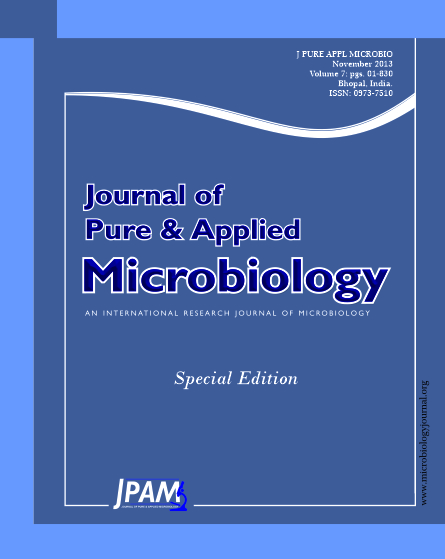Detection of Aflatoxins produced by 23 isolates Aspergillus flavus under UV light were isolated from eight samples of hazelnuts . twelve isolates of A. flavus were positive for aflatoxin production, while eleven isolates were negative for fluorescence. Extraction of aflatoxin from shelled hazelnuts was then performed through high-performance liquid chromatography (HPLC), nine isolates were capable of producing different levels of aflatoxin B1 and B2 but two isolates failed to produce any amount of aflatoxin B1 or B2. The anti-aflatoxigenic effect of Cinnamon oil at 4% was examined. The highest levels of inhibition ranging from 68.9 to 81.6% with isolate no H16 and H 10 respectively. five isolates were capable of producing aflatoxin G1 and G2, four isolates produced G2 only while three isolates failed to produce G1 or G2. Cinnamon oil at a concentration of 4% led to the highest levels of inhibition which ranged from 72.7 to 93.1%
Antiaflatogenic, Cinnamon, Aspergillus flavus, Hazelnuts
© The Author(s) 2013. Open Access. This article is distributed under the terms of the Creative Commons Attribution 4.0 International License which permits unrestricted use, sharing, distribution, and reproduction in any medium, provided you give appropriate credit to the original author(s) and the source, provide a link to the Creative Commons license, and indicate if changes were made.


